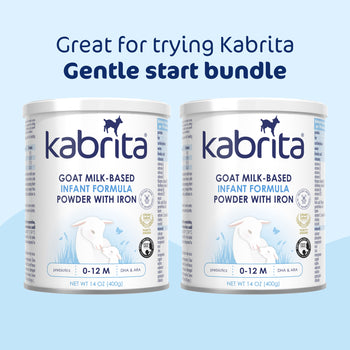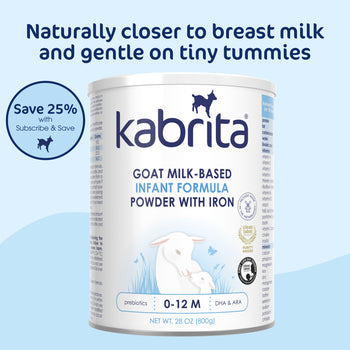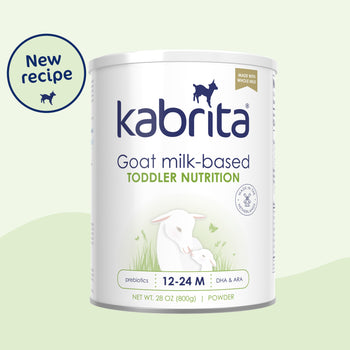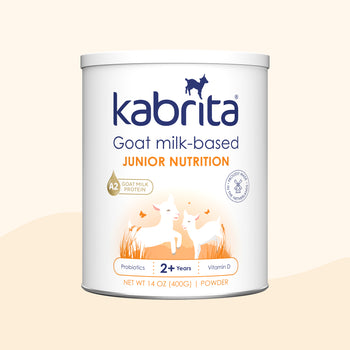What to Look for When Choosing the Best Baby Formula
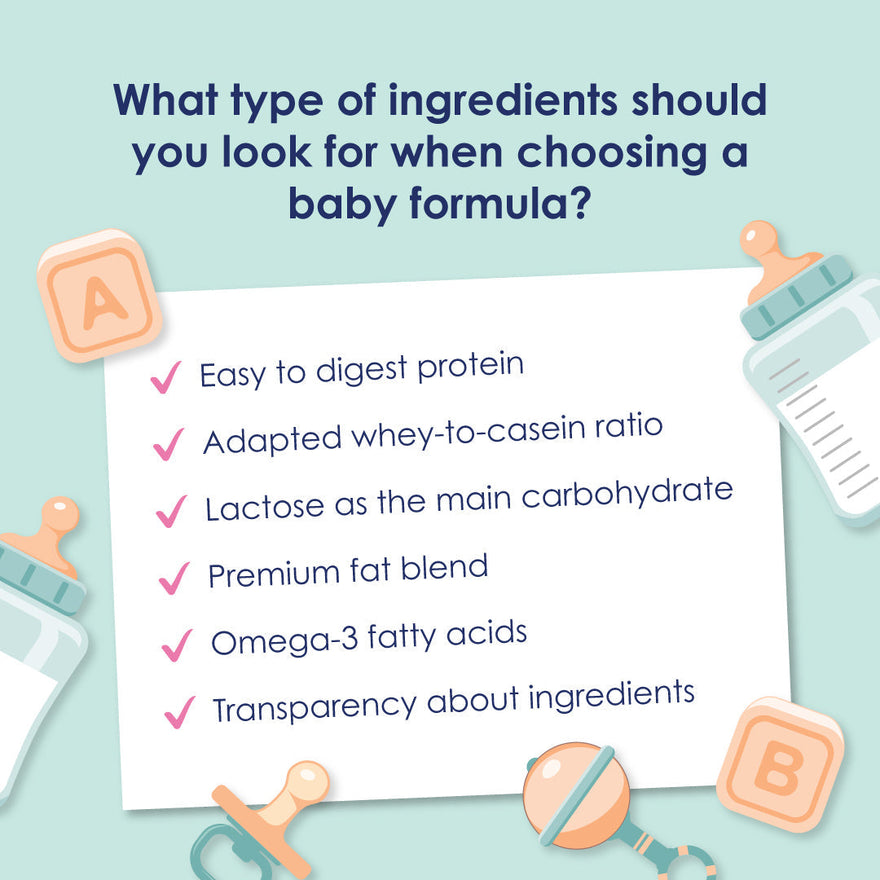
Read on to learn about important baby formula ingredients to look for when choosing the best formula for your healthy baby.
Experts agree that breast milk offers optimal nutrition for babies. For families needing or choosing formula, finding the best baby formula for your little one can be complicated. Read on to learn about essential baby formula ingredients to look for when choosing the best formula for your baby.
Easy to Digest Protein
A baby’s digestive system is still growing and maturing, so it’s essential that the protein in the formula is easy to digest. Goat milk protein is naturally easy to digest and forms a softer, smaller and looser curd in the gut compared to cow milk protein. It is also degraded more quickly than cow milk protein. Some babies with health concerns may require a specialty formula, where the protein components are partially or fully broken down.
Adapted Whey to Casein Ratio
Animal milk is made up of two major types of protein: whey and casein. Whey remains liquid in the gut and is therefore digested more quickly, while casein forms a curd when digested. Cow and goat milk both contain 20% whey and 80% casein, so formula should contain added whey to maintain a balance of whey and casein, which may also improve ease of digestion. Look for “whey” in the ingredient list, so you know the whey to casein ratio is adapted. Kabrita Goat Milk Toddler Formula is adapted and contains added goat whey, with a 50:50 ratio casein to whey.
Lactose as the Main Carbohydrate
Carbohydrates are an essential energy source for growing babies, and for most babies, lactose is the preferred source of carbohydrates. Research has shown that lactose may benefit the gut microflora, and help with the absorption of calcium in babies. As humans age, we produce less lactase enzyme making lactose intolerance more common in older children and adults. However, lactose intolerance is uncommon in babies under the age of two or three; and most babies produce sufficient amounts of the enzyme lactase, which breaks down lactose for absorption.
Other carbohydrates you may see in formulas include maltodextrin and corn syrup. These carbohydrates may be used in lactose-free or reduced lactose formulas to reduce cost, increase sweetness, or due to a medical indication**.
Premium Fat Blend
Fat is a critical macronutrient for babies and they require a complex variety of fatty acids to thrive. Palmitic acid is an important fatty acid for growing babies, but the structure of palmitic acid can also play an important role in absorption and digestion.
In the US, the formula industry standard is to replace animal fat with a vegetable oil blend. As no single oil has the complex fatty acid profile that babies require, manufacturers will use a vegetable oil blend (often including palm oil as a vital source of palmitic acid). A fat blend with beta palmitate, as is found in Kabrita Goat Milk Toddler Formula, mimics both composition and structure and has been positively associated with improved nutrient absorption, bone mineral content and stool consistency.
Omega-3 Fatty Acids
Omega-3 fatty acids, specifically DHA, are critical for the eye, brain, and nervous system development, and also have positive effects on cognitive development. DHA is naturally found in breast milk, along with other omega fatty acids such as ARA. Studies have shown that supplementing formula with both DHA and ARA, instead of DHA alone, is vital for development. Kabrita Goat Milk Toddler Formula contains 23 mg of DHA per two 4 oz servings.
Transparency About Ingredients
Families using formula should have access to reliable information to make informed choices. At Kabrita USA, we believe that clarity about the ingredients in baby formula and manufacturing practices is crucial to empowering parents to make confident decisions about the best baby formula for their family.
Kabrita Goat Milk Toddler Formula may be an option for little ones during feeding transitions, such as weaning and supplementing, or those with minor issues associated with cow milk sensitivity*.
*Not suitable for children with confirmed cow milk protein allergy
**Formulas without lactose may be suitable for children with congenital alactasia or galactosemia; these formulas may also be suitable for children with cow milk protein allergy as lactose may contain a trace amount of cow milk protein.
